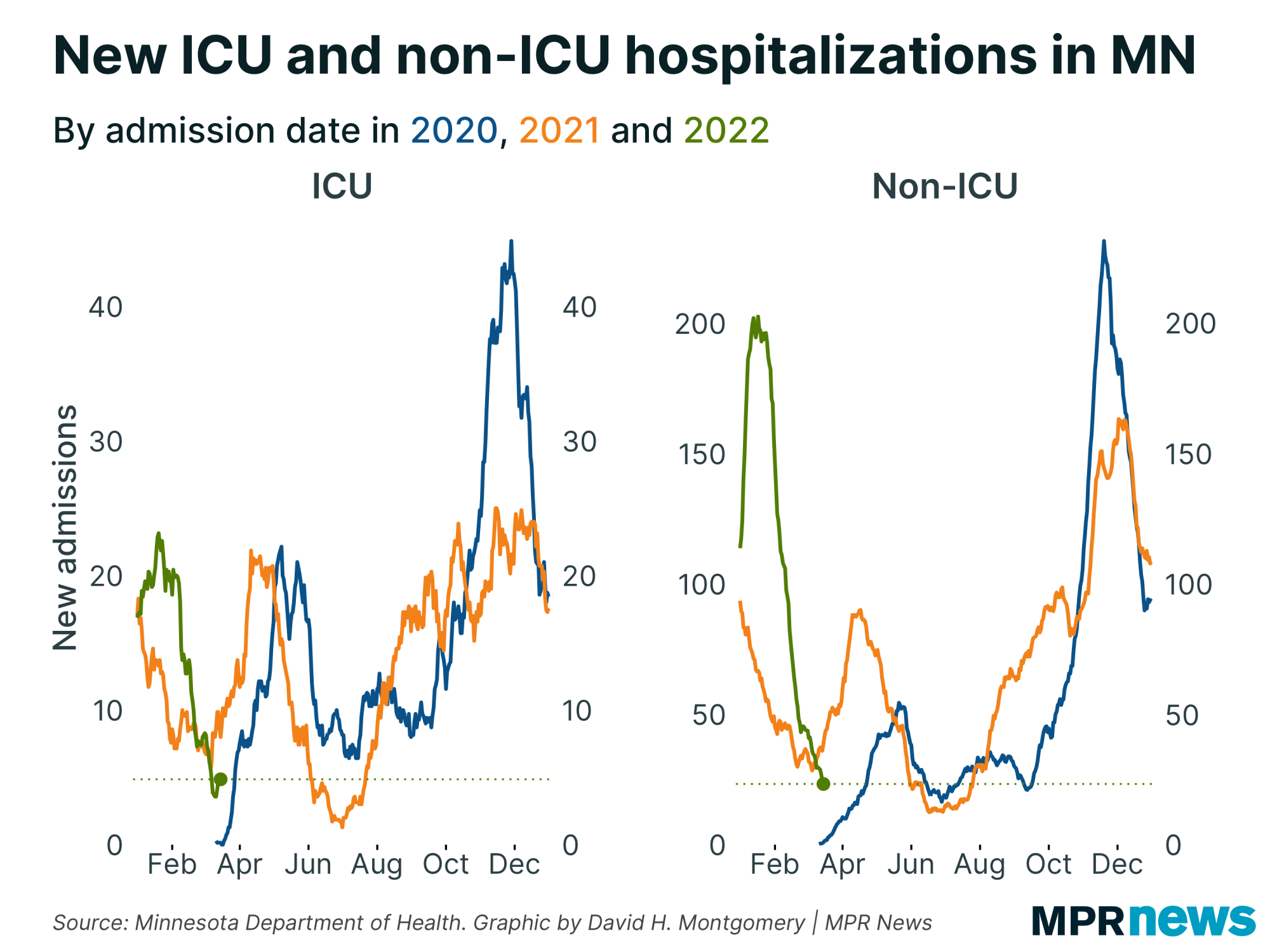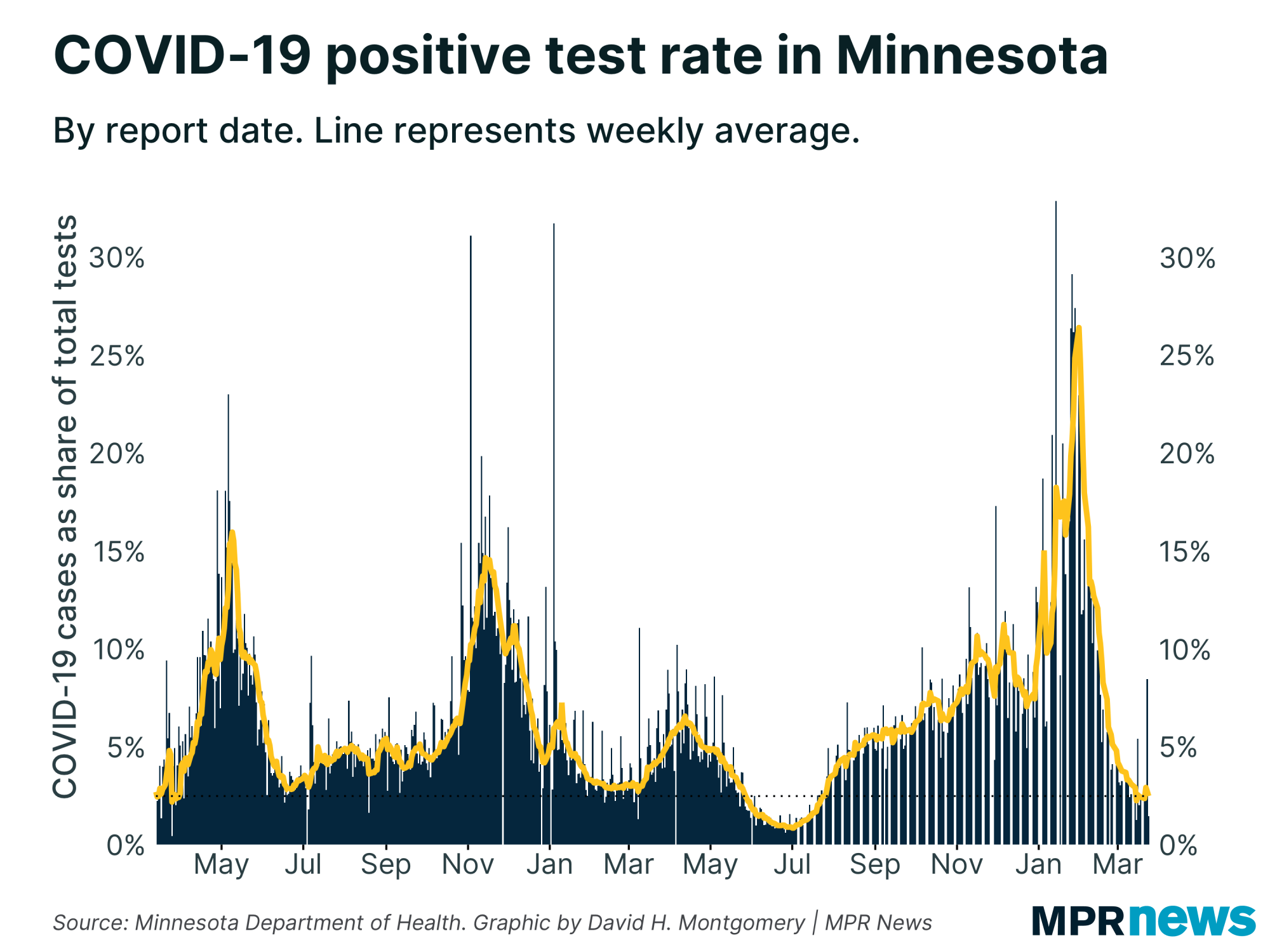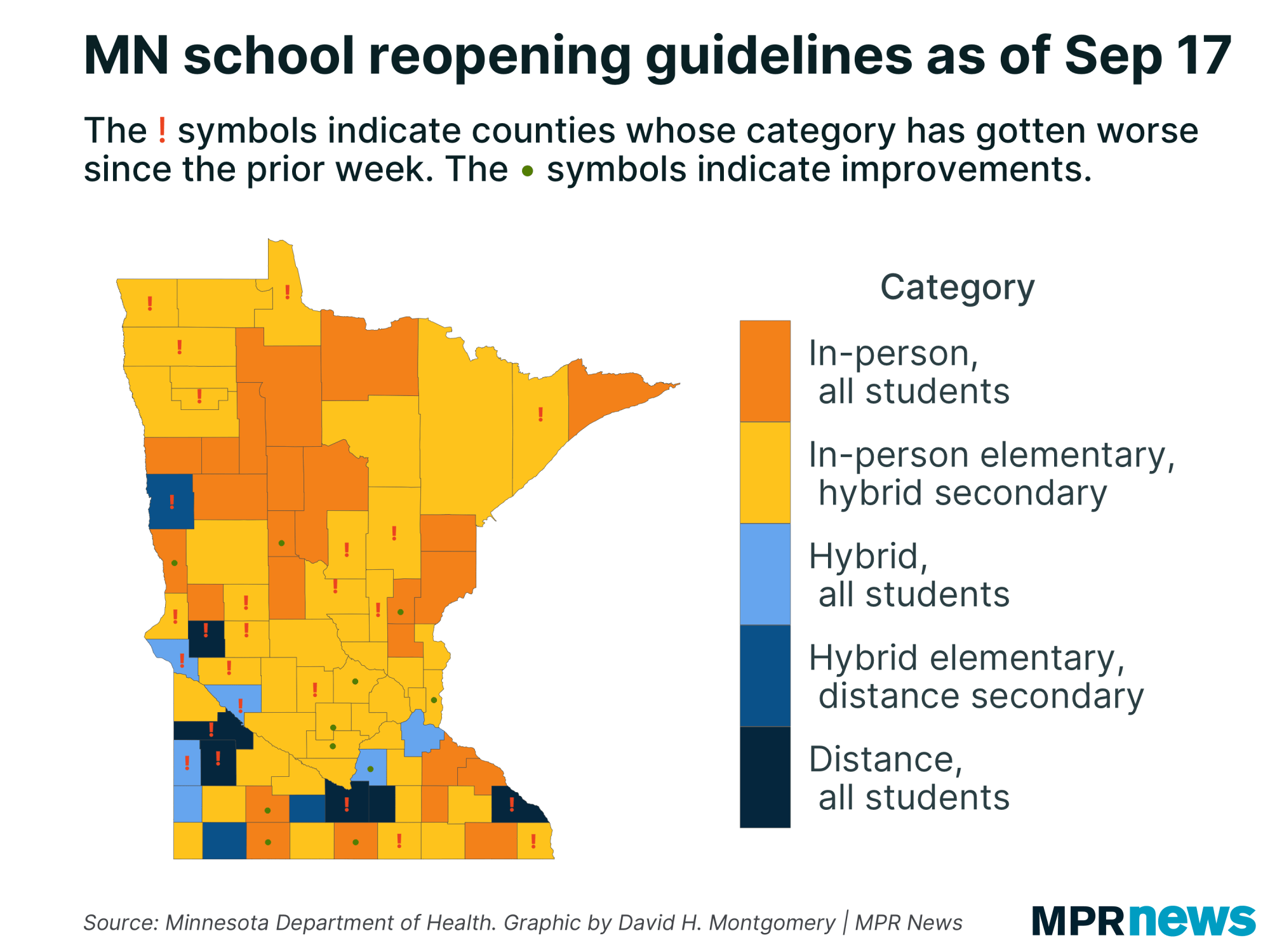Oct. 3 update on COVID-19 in MN: 1,434 newly confirmed cases, 14 more deaths

Go Deeper.
Create an account or log in to save stories.
Like this?
Thanks for liking this story! We have added it to a list of your favorite stories.
Minnesota health officials on Saturday reported another 14 COVID-19 deaths in the state, the fourth day in a row with 10 or more deaths — the first time that’s happened since June.
Meanwhile the state saw another 1,434 confirmed cases of COVID-19 in Saturday’s report, a near-record daily increase as testing in the state also continued at a high level. The number of active COVID-19 cases in Minnesota remains at record levels.
Saturday’s numbers came at the end of a week in which Minnesota passed 100,000 total cases of the disease, and a week after the state passed 2,000 confirmed deaths in the pandemic. And President Donald Trump’s COVID-19 diagnosis on Friday reaffirmed a message the state’s public health leaders have been hammering at for weeks: The pandemic is far from over.

Here are Minnesota’s current COVID-19 statistics:
Turn Up Your Support
MPR News helps you turn down the noise and build shared understanding. Turn up your support for this public resource and keep trusted journalism accessible to all.
2,073 deaths (14 new)
102,787 positive cases (1,434 new); 91,844 off isolation
2,116,038 tests, 1,462,532 people tested
Ten of the 14 newly reported COVID-19 deaths on Saturday were people who lived in long-term care facilities.
In light of President Trump’s COVID-19 diagnosis, state officials on Friday also warned that people who attended the president’s Minnesota events this week may be infectious without knowing it.
They noted that community spread in St. Louis County, where Trump spoke to a Duluth rally, was high before the president’s visit.

They urged anyone with a connection to the president’s visit to get tested “right away” if they have symptoms and consider it even without symptoms, adding that anyone who was in direct contact with Trump or known COVID-19 cases needs to quarantine.
‘Escalating roller coaster effect’
Minnesota public health leaders say outbreaks are being driven now largely by formal and informal get-togethers among friends, families and co-workers who are not staying vigilant against the disease.

The state is starting to see the surge officials expected from Labor Day weekend gatherings, sporting events and college student meetups before the start of fall semester, Kris Ehresmann, the state’s infectious disease director, told reporters earlier in the week.
“It’s a function of what happened at the beginning of September … but sort of the ongoing ripple effect of community transmission we’ve seen all summer,” she said.
Analysts are seeing higher numbers even on days of the week with typically low case counts. The highs and lows are both rising. “That escalating roller coaster effect is definitely in place, and we’re concerned about the activity that we’re continuing to see,” she added.

Ehresmann on Wednesday also called on Minnesotans to get a flu shot, noting that public health authorities are concerned about a one-two punch of COVID-19 and flu outbreaks this fall and through the winter.
The state order in the spring that shut down retail stores, salons and indoor dining at restaurants because of COVID-19 also helped squelch the spring flu season, she noted. With bars, eateries and other retail operations partially reopened now to indoor business, officials are uneasy about what might happen now.
Worries continue around college students, kids
People in their 20s make up the age bracket with the state’s largest number of confirmed cases — more than 23,000 since the pandemic began, including more than 13,500 infections among people ages 20-24.
The numbers help explain why experts remain particularly concerned about young adults as spreaders of the virus.

While less likely to feel the worst effects of the disease and end up hospitalized, experts worry youth and young adults will spread it to grandparents and other vulnerable populations and that spread could hamper attempts to reopen campuses completely to in-person teaching.
The number of high school-age children confirmed with the disease has also grown, with more than 9,600 total cases among children ages 15 to 19 since the pandemic began.
With many schools in Minnesota attempting to teach in-person, officials say they are especially concerned about the rising numbers of teens becoming infected and how that could affect decisions to keep school buildings open.
The Health Department on Friday identified seven school buildings in Minnesota with five or more confirmed cases of COVID-19 in students or staff who were in those buildings while infectious during a two-week reporting period.
The schools are: Brainerd High School, Albert Lea High School, Isanti Middle School; Fairmont Junior/Senior High School, Martin Luther High School and St. Paul Lutheran School in Martin County; and Hinckley Elementary School.
The fact that only seven schools have five or more such cases is “very positive,” Ehresmann told reporters Friday. “We’re not seeing large outbreaks at all associated with a school setting.”
Ehresmann said that the agency had reports of 2,805 COVID-19 cases in the pandemic associated with colleges and universities with nine people needing to be in the hospital and three needing intensive care.
The numbers for colleges or K-12 schools don’t necessarily mean that the disease spread happened in school buildings, only that people were infectious while in a school building, she added.
Surges seen in southern, central Minnesota
Regionally, southern and central Minnesota have driven much of the recent increase in new cases while Hennepin and Ramsey counties show some of the slowest case growth in the state. Northern Minnesota is also on the upswing.

In southwestern Minnesota, at least 75 cases have been traced to a late-August wedding in Lyon County that officials have previously described as the state’s largest single social spreader event.
Thirty-nine cases have now been traced to a Martin County funeral, with one person hospitalized.

Southeastern Minnesota, specifically Winona, has been another hot spot as students return to college at Winona State and other schools. The problem has been compounded by similar outbreaks nearby across the Mississippi River at the University of Wisconsin-La Crosse.
Developments around the state
Virus spread shifts the school guidance map
The evolving COVID-19 pandemic in Minnesota continues to change school reopening recommendations around the state.
The most recent batch of recommendations, released Sept. 17, cover cases from Aug. 23 to Sept. 5 — a period that happened to see a late-August spike in new COVID-19 cases.
The result? A full 25 counties saw their COVID-19 case counts slip past one of the Health Department’s thresholds, changing their recommendation toward more distance learning for more students.

In the most recent update, six counties are recommended to have all students do full-time distance learning: Blue Earth, Lyon, Stevens, Waseca, Winona and Yellow Medicine counties. All but Waseca County were previously recommended to allow at least some in-person learning.
Not every county got worse. Eleven counties saw their case rates improve compared to last week’s results, and saw their recommendation shift to more in-person learning.
Overall, 24 largely rural counties have a recommendation of in-person for all students.
A formula produced by the Health Department generates the guidance for districts to help decide whether to have in-person learning, distance learning, or a mix, based on the rate of COVID-19 cases in that district’s county over a two-week period.
These recommendations are only considered the starting point for school districts, which make their own learning plans in cooperation with the Health Department.

Minnesota’s yo-yoing COVID-19 case numbers in recent weeks have meant some drastic swings in school districts’ safe learning recommendations, but state health officials say they’re taking the data irregularities into account when working with schools to set learning plans.
Because Minnesota’s calculation uses weeks-old data and calculates cases by the day a person got tested rather than the day the tests were reported, this update is not affected by recent reporting delays caused by the Labor Day weekend.
— David H. Montgomery | MPR News
Top headlines
Health workers worry fear, distrust complicate COVID-19 tracing in Minnesota’s communities of color: Public health workers chasing the coronavirus are required to tell people their information may be shared with the law. While well-intended, it’s made it difficult to trace the virus among the very people hit hardest by the virus.
Limited winter prep sports seasons approved: The Minnesota State High School League voted Thursday to go ahead with winter sports seasons, with a 30 percent reduction in games and matches.
Hospitals feel squeeze as coronavirus spikes in Midwest: The coronavirus tightened its grip on the American heartland, with infections surging in the Midwest, some hospitals in Wisconsin and North Dakota running low on space and the NFL postponing a game over an outbreak that’s hit the Tennessee Titans football team.
COVID-19 in Minnesota
Data in these graphs are based on the Minnesota Department of Health's cumulative totals released at 11 a.m. daily. You can find more detailed statistics on COVID-19 at the Health Department website.


